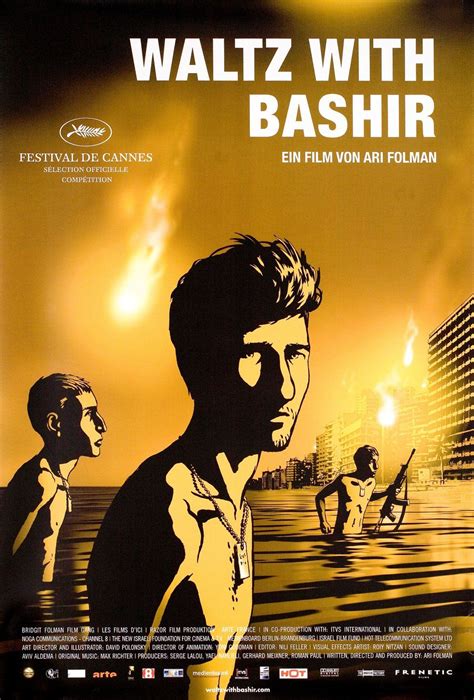The 2008 Israeli animated documentary film Waltz with Bashir, directed by Ari Folman, is a powerful and haunting exploration of memory, trauma, and the human experience. This guide will delve into the making of the film, its historical context, and the impact it has had on the world of documentary filmmaking.
At its core, Waltz with Bashir is a personal and introspective journey of Ari Folman, who at the age of 19 was a soldier in the Israel Defense Forces (IDF) during the 1982 Lebanon War. The film is an attempt by Folman to reconstruct his memories of the war, particularly his involvement in the Sabra and Shatila massacre, which resulted in the deaths of thousands of Palestinian refugees. Through a series of interviews with former soldiers and historians, Folman pieces together the events of the war, exploring the psychological effects of trauma on individuals and society.
One of the most striking aspects of Waltz with Bashir is its use of animation. The film’s vibrant, expressive, and often surreal animation style, created by the Israeli animation studio Bridgit Folman Film Gang, brings a unique and captivating visual language to the documentary genre. The animation serves not only as a stylistic choice but also as a narrative device, allowing Folman to represent his memories and emotions in a way that would be impossible with traditional live-action footage.
The historical context of the film is also crucial to understanding its significance. The 1982 Lebanon War was a pivotal moment in Israeli history, marking a turning point in the country’s relationship with its Arab neighbors. The Sabra and Shatila massacre, in particular, was a horrific event that shocked the world and raised questions about the accountability of military leaders and the responsibility of soldiers in wartime.
Waltz with Bashir has had a significant impact on the world of documentary filmmaking, pushing the boundaries of the genre and inspiring a new generation of filmmakers to experiment with innovative storytelling techniques. The film’s success can be measured by its critical acclaim, including an Academy Award nomination for Best Foreign Language Film, as well as its influence on subsequent documentaries that have incorporated animation and other non-traditional narrative devices.
In conclusion, Waltz with Bashir is a groundbreaking and thought-provoking documentary that explores the complexities of memory, trauma, and the human experience. Through its innovative use of animation and introspective narrative, the film provides a unique and captivating perspective on the 1982 Lebanon War and the Sabra and Shatila massacre. As a guide to understanding the film, this article has delved into the making of the documentary, its historical context, and its impact on the world of documentary filmmaking.
What is the historical context of Waltz with Bashir?
+The historical context of Waltz with Bashir is the 1982 Lebanon War, a pivotal moment in Israeli history that marked a turning point in the country’s relationship with its Arab neighbors. The war resulted in the deaths of thousands of Palestinian refugees in the Sabra and Shatila massacre, an event that shocked the world and raised questions about the accountability of military leaders and the responsibility of soldiers in wartime.
How does the use of animation in Waltz with Bashir contribute to the film’s narrative?
+The use of animation in Waltz with Bashir serves as a narrative device, allowing Ari Folman to represent his memories and emotions in a way that would be impossible with traditional live-action footage. The animation brings a unique and captivating visual language to the documentary genre, making the film more engaging and thought-provoking.
What impact has Waltz with Bashir had on the world of documentary filmmaking?
+Waltz with Bashir has had a significant impact on the world of documentary filmmaking, pushing the boundaries of the genre and inspiring a new generation of filmmakers to experiment with innovative storytelling techniques. The film’s success can be measured by its critical acclaim, including an Academy Award nomination for Best Foreign Language Film, as well as its influence on subsequent documentaries that have incorporated animation and other non-traditional narrative devices.



